A short photo story about a trip to the Caucasus Mountain Observatory of the SAI MSU
This is how you sit in the office, develop the device, and then you find yourself in a taxi, which stands in front of the gates of the Caucasian Mountain Observatory of the SAI MSU at a height of 2 km above sea level.
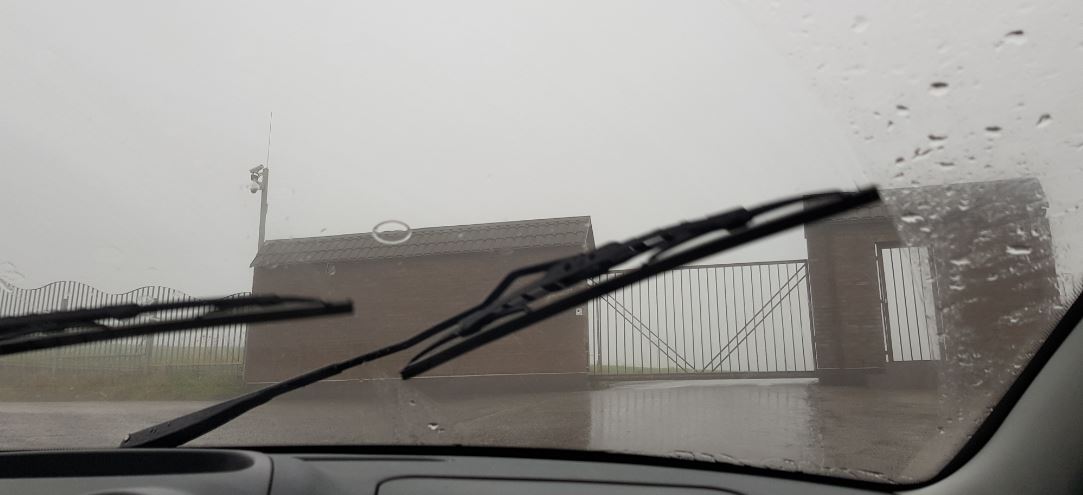
Some fat photos under a cat.
A couple of months ago, our tiny engineering bureau took an order to develop a device for a telescope. In detail about the device I will not tell, for it is necessary to observe NDA. Outside the window was the spring Petersburg, the electronics engineers soldered the circuit, wrote the firmware, I made models, prepared control programs for the CNC and milled the details one by one. On one of the days, the device was assembled, and dozens of test runs were left behind. A message from the customer arrived in the messenger that it was time to take off for field trials and a couple of hours later the Petersburg - Mineralnye Vody ticket fell to the mail. The place of testing is the Caucasian Mountain Observatory of the SAI MSU .
')
Frankly, I never looked through a telescope, and I didn’t even stand next to my viewers, although I subscribed to all possible astronomical and simple space publics, and also follow Curie since its very first sola with constant interest. But he knew about the existence of CSC, unlike all taxi drivers, who live near the airport of Mineralnye Vody. So, upon arrival, I had to explain to dispatchers, and then drivers, for a long time, that if you left Kislovodsk and found a place called Kichi-Balyk, then ascending the mountain you can find as many as two observatories and the highest one will be KGO. Only the GPS coordinates helped, because Yandex.Maps were not found at the dispatchers, and they don’t know Google Maps and don’t know.
From the window of a taxi, the road looked colorful and in places was very similar to the landscapes of New Zealand, if we imagine that there are no road signs and cars with Russian numbers:
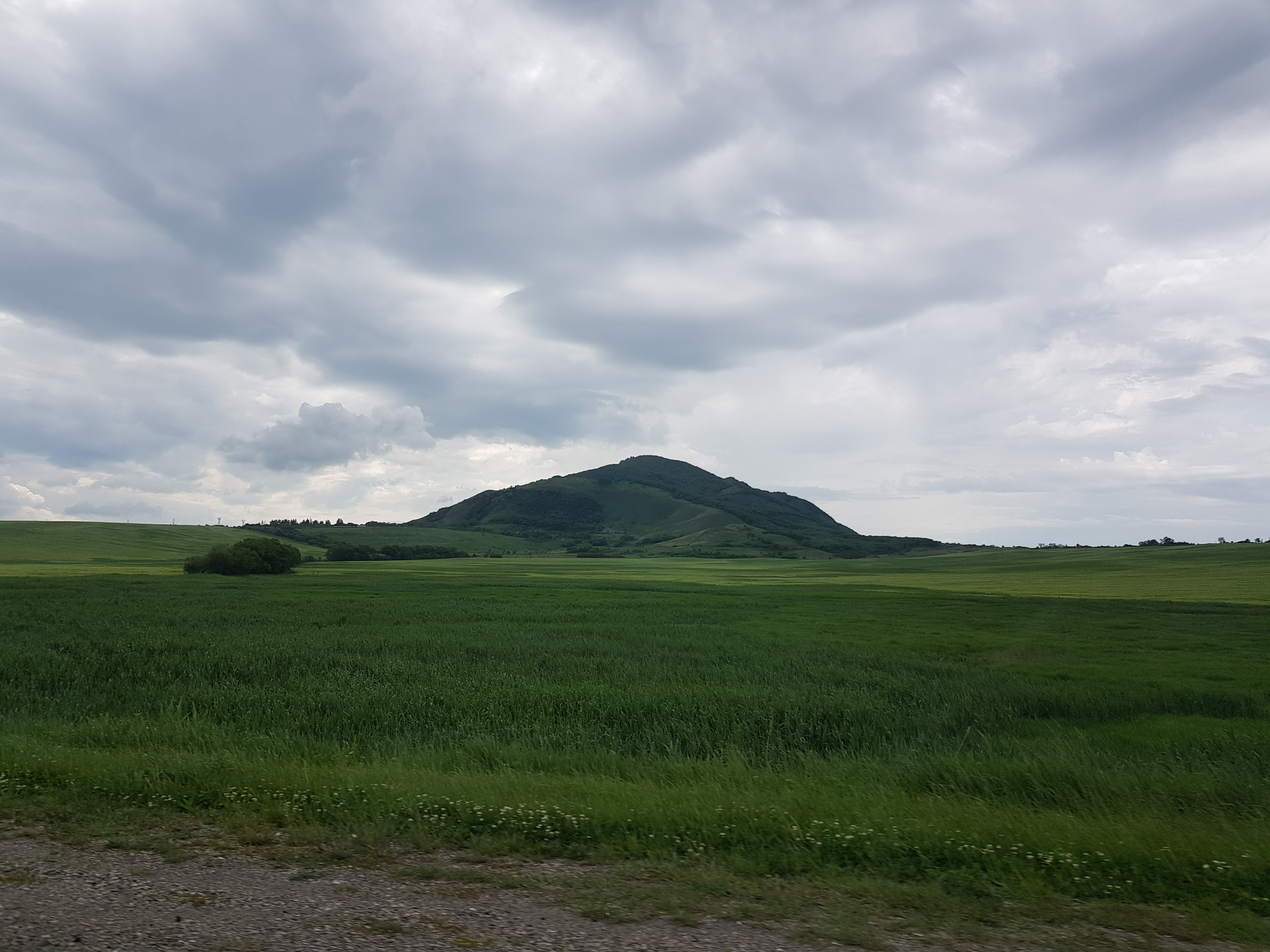

Exactly until such time as we drove to the height of those clouds that had previously been seen from afar:
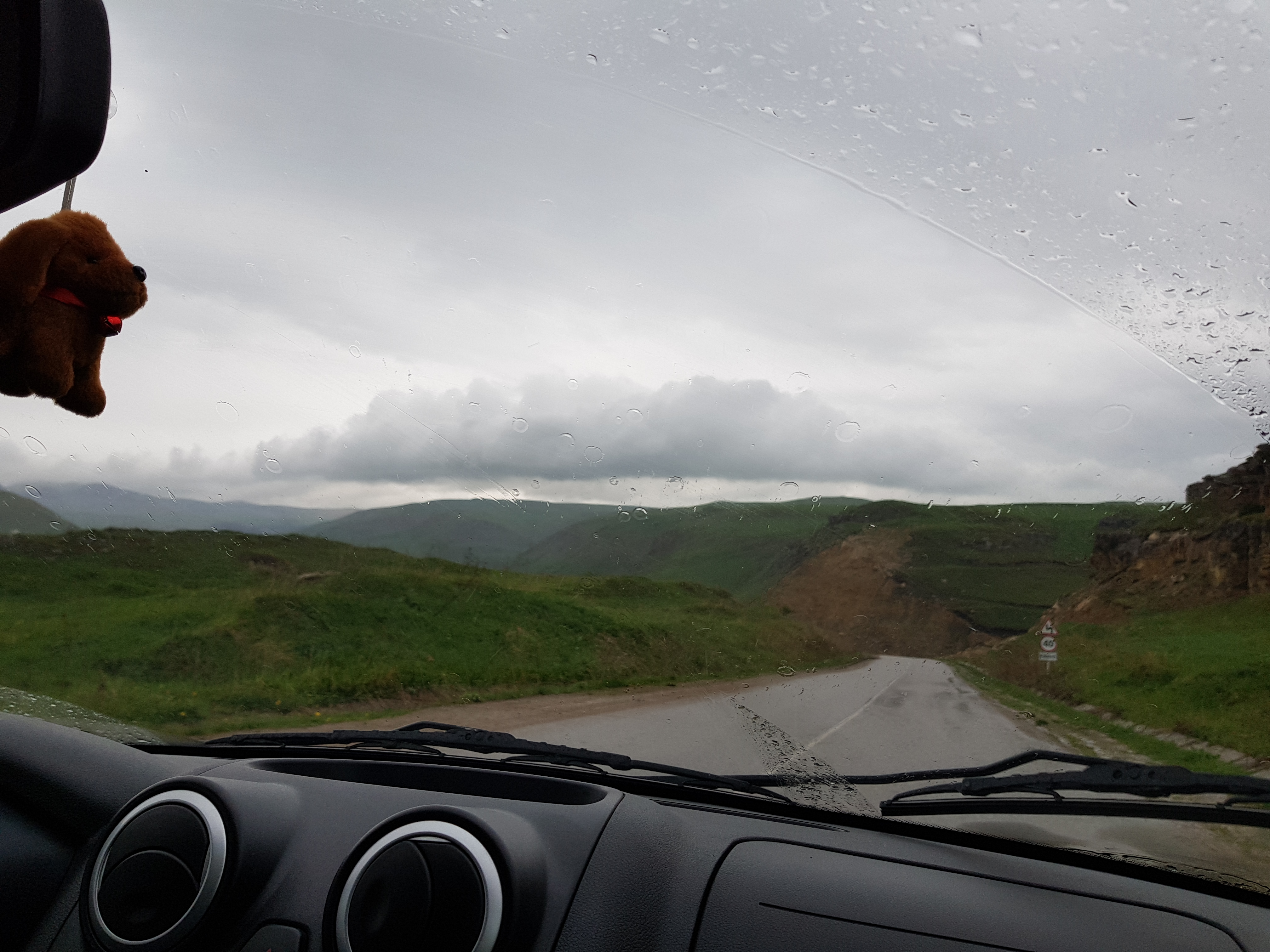
Because when we got to the very top and arrived at the gate of the CSC, we were inside the rain cloud and it seemed that it was raining from all sides.

It turned out that in cloudy weather very often a cloud literally creeps into the territory and in a matter of seconds the visibility drops to two or three meters. Here you can see a pavilion with a small telescope in this photo, and a large telescope in the background in a minute was completely invisible:

A large telescope is a mirror 2.5 m telescope with five ports (1 Cassegrain focus and 4 Nesmith foci) on which different equipment can be mounted.
Under the dome, it looks like this:

This is his secondary mirror:
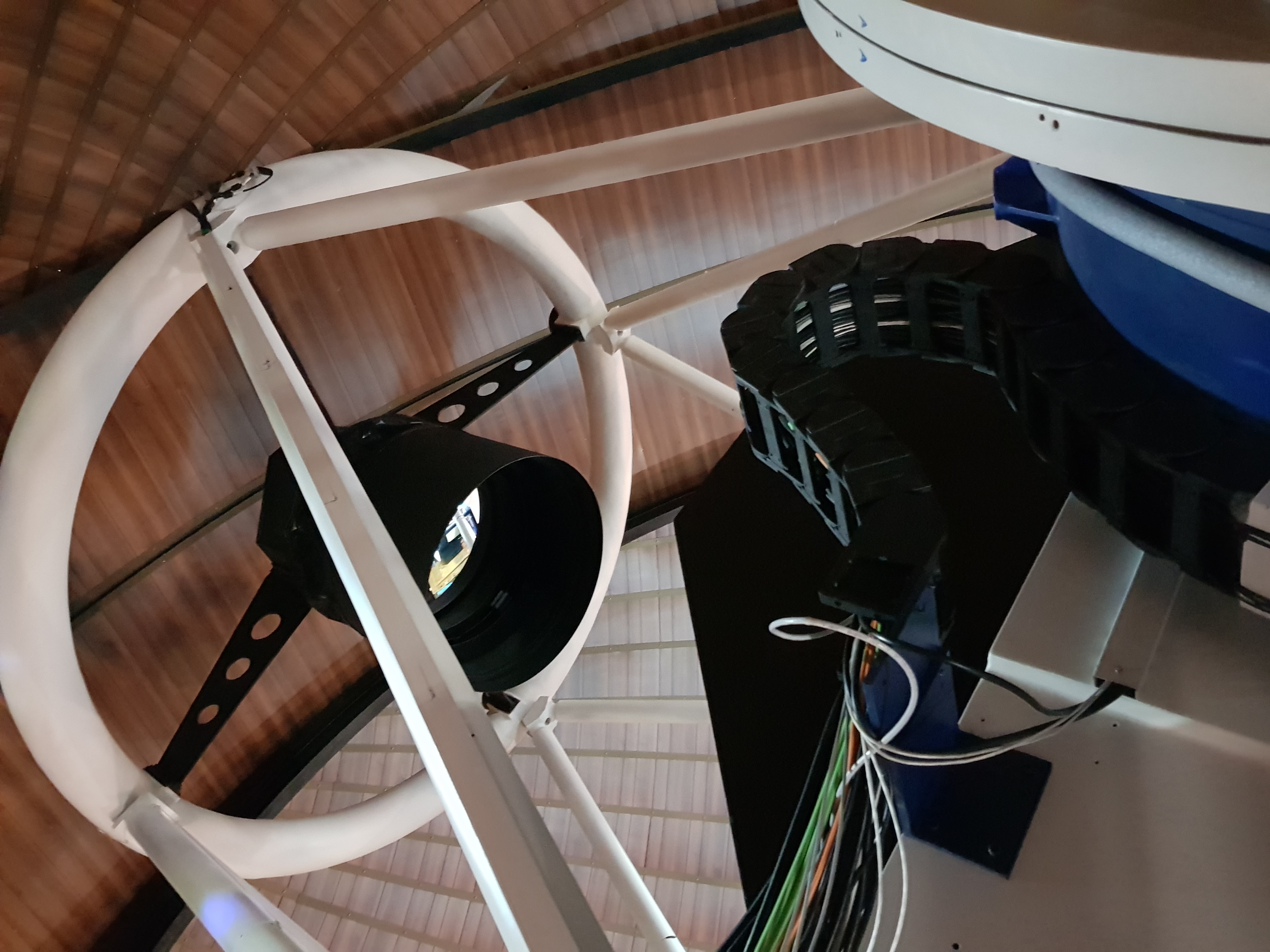
And this is me for comparison:
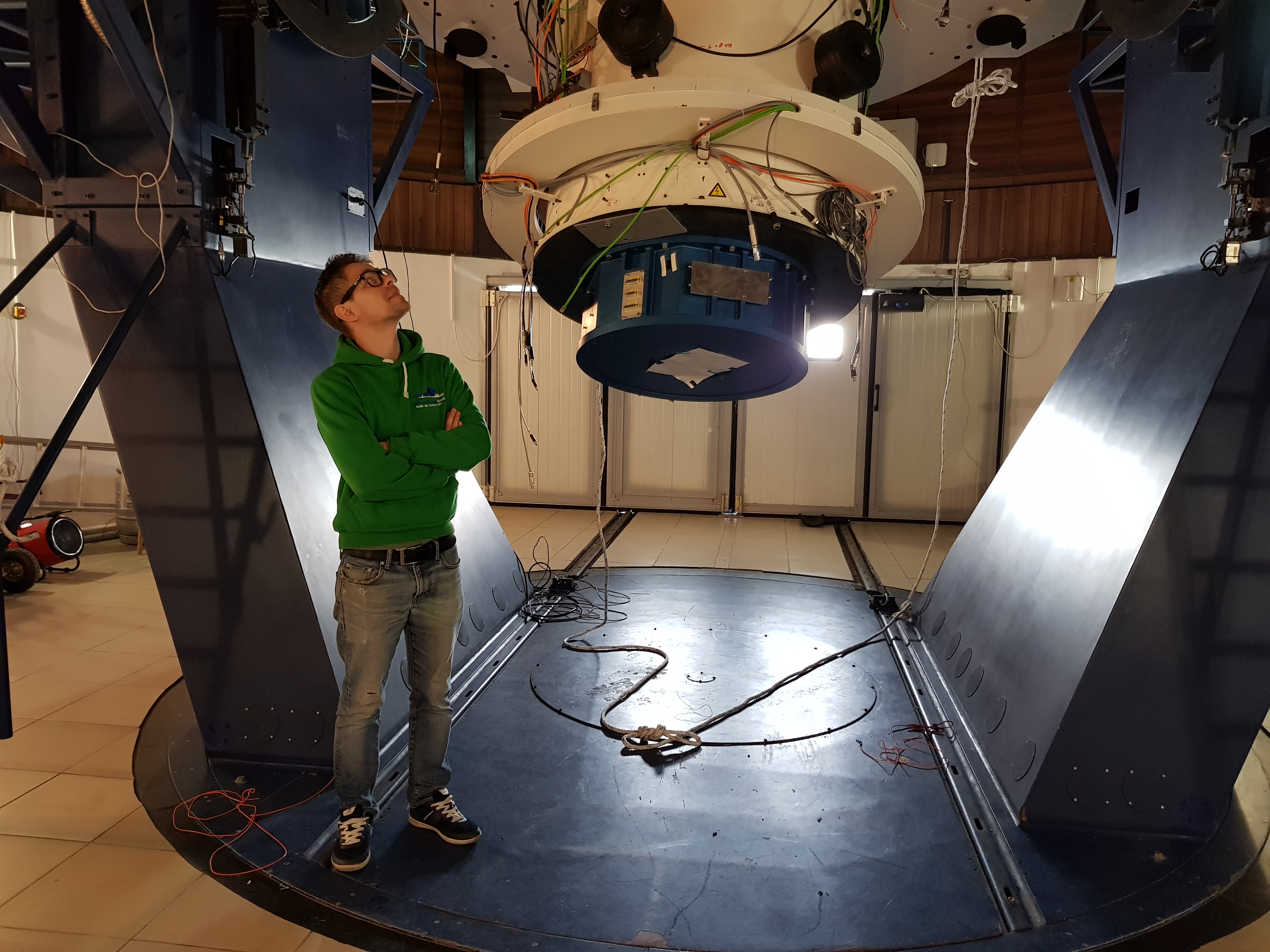
The domed climate is provided by the installation of air conditioning and ventilation, which drives the air along thermally insulated air ducts, blowing it around the perimeter of the dome and taking it back:

The smooth course of all bearings is provided by a separate oil station:

And these are communications that slide neatly into the basement and go to the observation room:

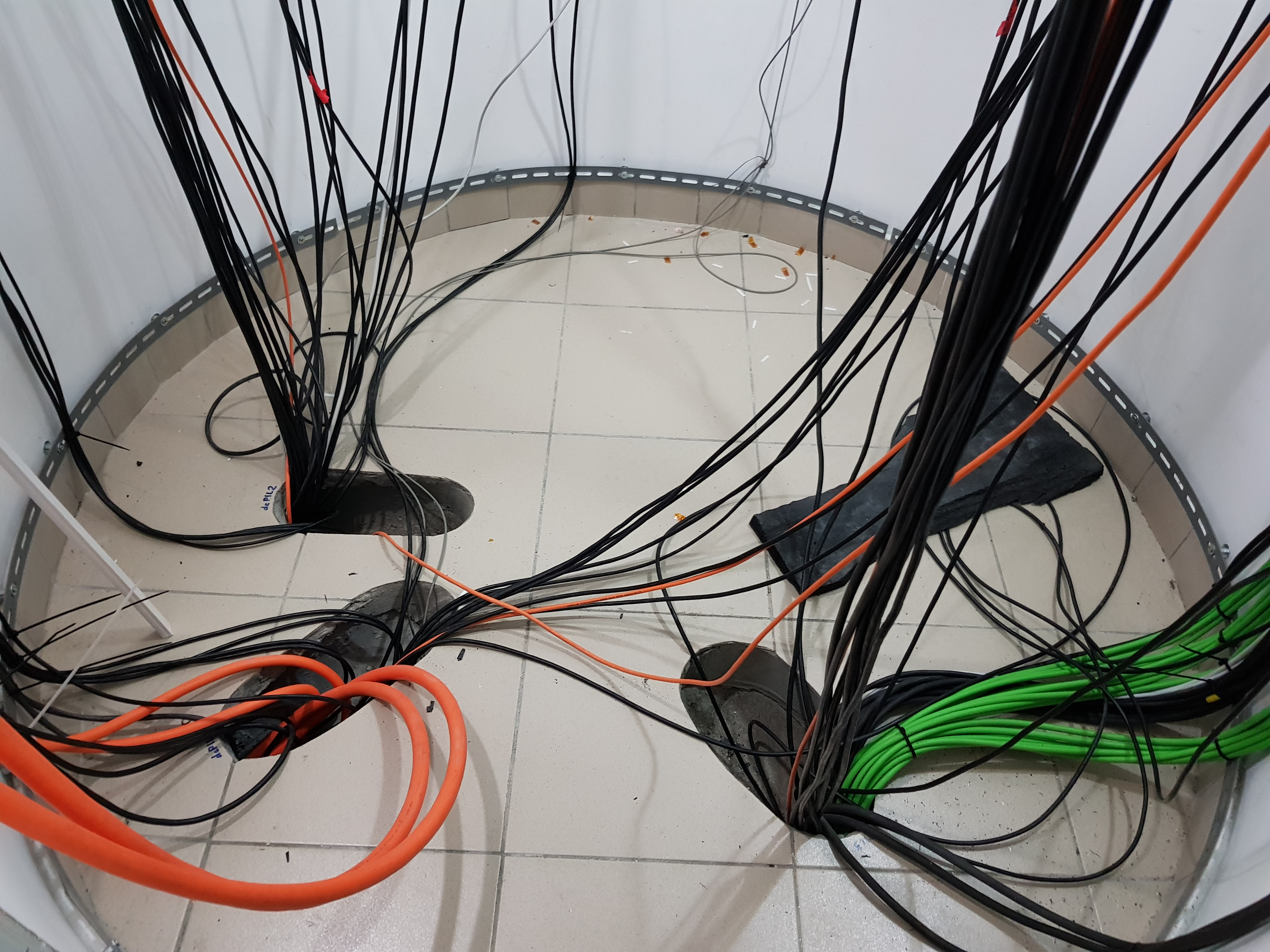
This photo shows the rails for the movement of the cart, on which the main mirror falls:

Then this mirror can be sent to the post of restoration of the mirror coating, which is located in the adjacent building:


It must be said that the observatory has at its disposal excellent mechanical, electromechanical and auto repair shops, in which there is literally everything that may be needed to solve technical issues.
Between the corps we drove on a branded gazelle, whose lights turned on at night by pushing the throttle flap handle towards itself.
In good weather, the rest of the pavilions from the large telescope site look like this:
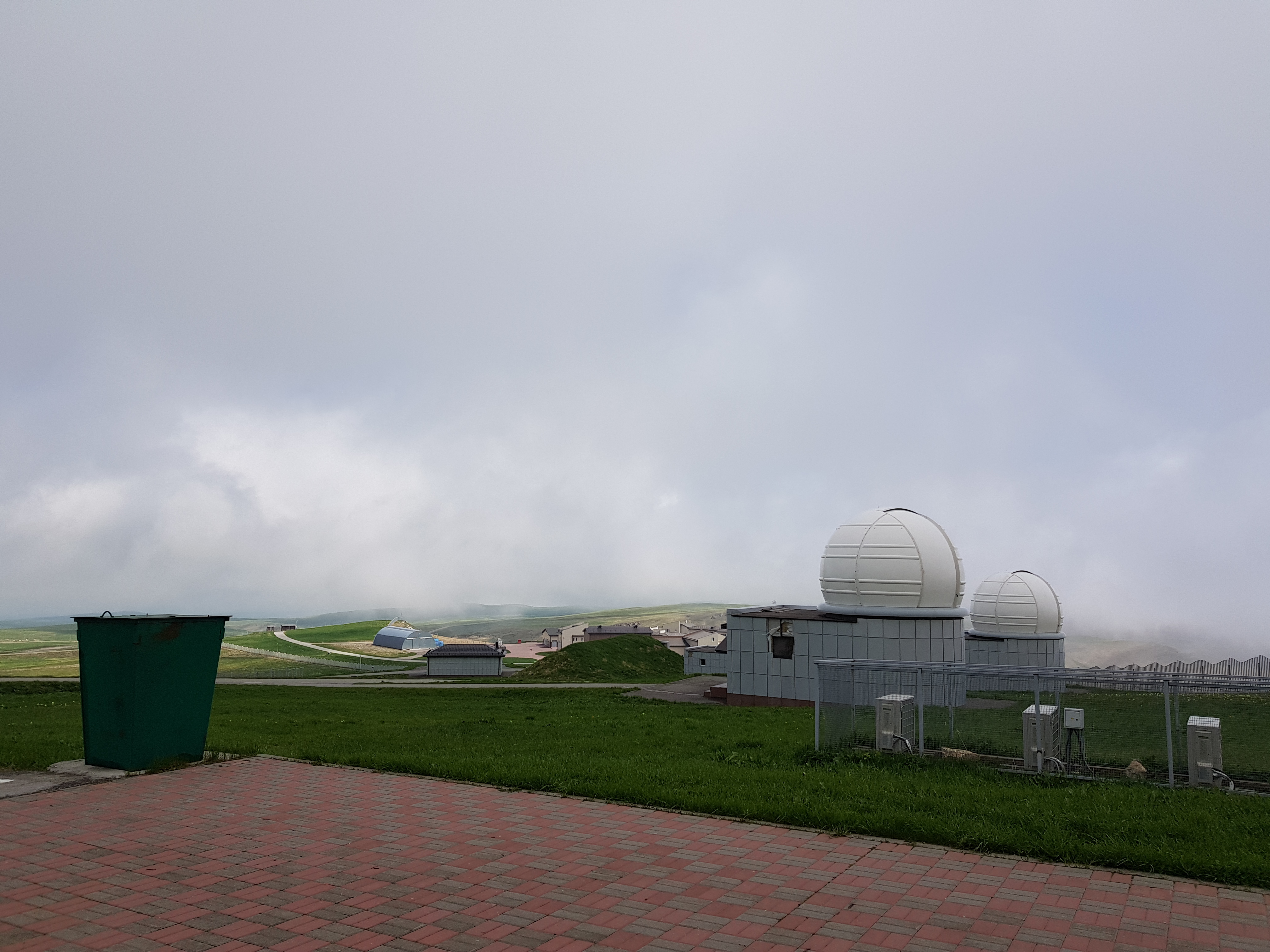
Here is one of the smaller telescopes on which we conducted the tests:

The telescope can be aimed both manually and remotely. However, as well as manage the dome:

This telescope is mainly used for photometry, in particular to study the variation of light of celestial bodies. For example, you can find an exoplanet that revolves around its star and periodically “darkens” it.
We receive the image on the laptop:
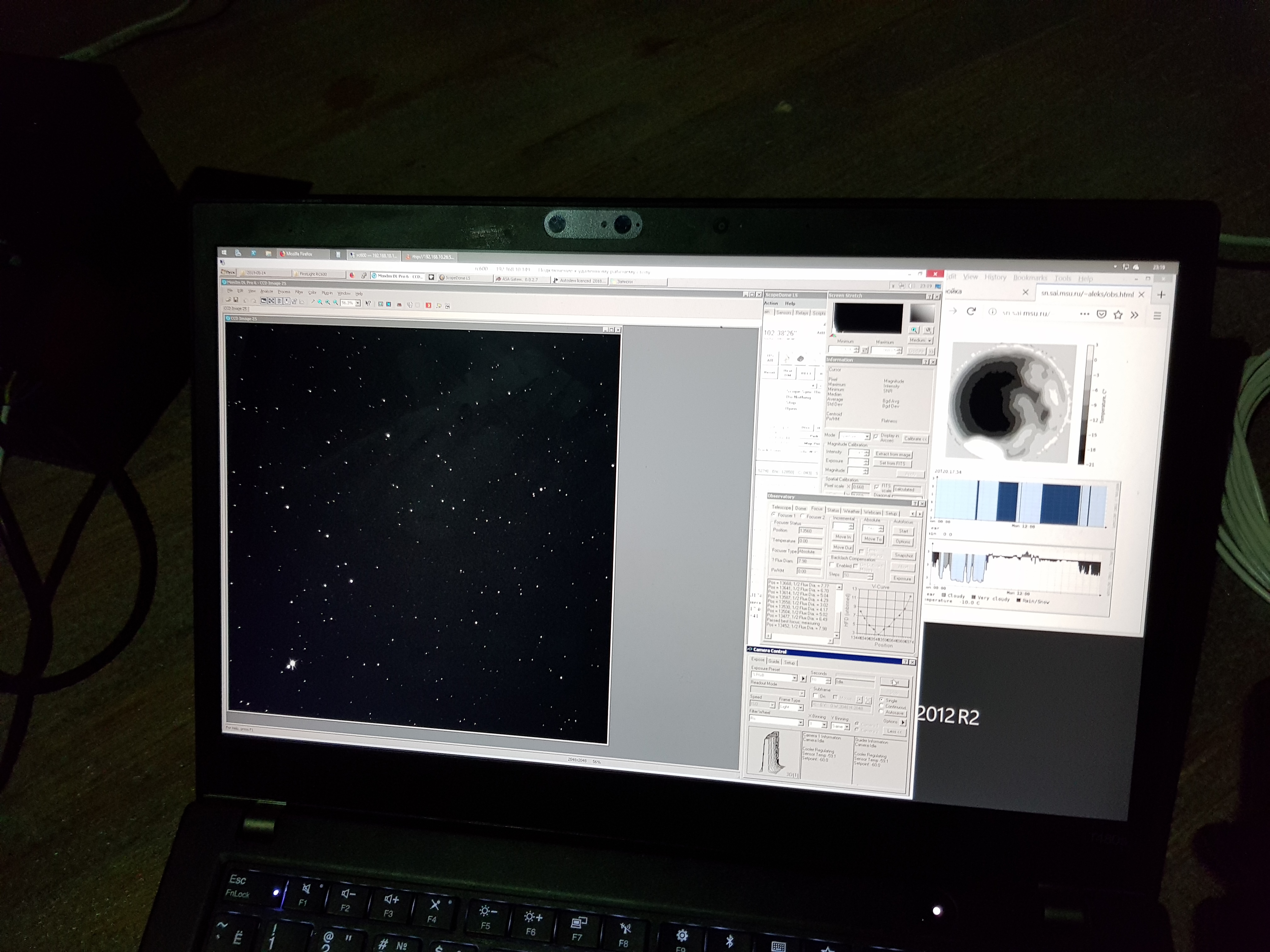
In general, if in the house where astronomers live, someone is sitting in the kitchen in front of a laptop and a cup of tea for a long night, then most likely this person is observing, and does not look at memes.
The tests were successful and the last important thing, of course, was to photograph the poor machine, which was barely moving on gas because of the rarefied mountain air.


Some fat photos under a cat.
A couple of months ago, our tiny engineering bureau took an order to develop a device for a telescope. In detail about the device I will not tell, for it is necessary to observe NDA. Outside the window was the spring Petersburg, the electronics engineers soldered the circuit, wrote the firmware, I made models, prepared control programs for the CNC and milled the details one by one. On one of the days, the device was assembled, and dozens of test runs were left behind. A message from the customer arrived in the messenger that it was time to take off for field trials and a couple of hours later the Petersburg - Mineralnye Vody ticket fell to the mail. The place of testing is the Caucasian Mountain Observatory of the SAI MSU .
')
Frankly, I never looked through a telescope, and I didn’t even stand next to my viewers, although I subscribed to all possible astronomical and simple space publics, and also follow Curie since its very first sola with constant interest. But he knew about the existence of CSC, unlike all taxi drivers, who live near the airport of Mineralnye Vody. So, upon arrival, I had to explain to dispatchers, and then drivers, for a long time, that if you left Kislovodsk and found a place called Kichi-Balyk, then ascending the mountain you can find as many as two observatories and the highest one will be KGO. Only the GPS coordinates helped, because Yandex.Maps were not found at the dispatchers, and they don’t know Google Maps and don’t know.
From the window of a taxi, the road looked colorful and in places was very similar to the landscapes of New Zealand, if we imagine that there are no road signs and cars with Russian numbers:


Exactly until such time as we drove to the height of those clouds that had previously been seen from afar:

Because when we got to the very top and arrived at the gate of the CSC, we were inside the rain cloud and it seemed that it was raining from all sides.

It turned out that in cloudy weather very often a cloud literally creeps into the territory and in a matter of seconds the visibility drops to two or three meters. Here you can see a pavilion with a small telescope in this photo, and a large telescope in the background in a minute was completely invisible:

A large telescope is a mirror 2.5 m telescope with five ports (1 Cassegrain focus and 4 Nesmith foci) on which different equipment can be mounted.
Under the dome, it looks like this:

This is his secondary mirror:

And this is me for comparison:

The domed climate is provided by the installation of air conditioning and ventilation, which drives the air along thermally insulated air ducts, blowing it around the perimeter of the dome and taking it back:

The smooth course of all bearings is provided by a separate oil station:

And these are communications that slide neatly into the basement and go to the observation room:


This photo shows the rails for the movement of the cart, on which the main mirror falls:

Then this mirror can be sent to the post of restoration of the mirror coating, which is located in the adjacent building:


It must be said that the observatory has at its disposal excellent mechanical, electromechanical and auto repair shops, in which there is literally everything that may be needed to solve technical issues.
Between the corps we drove on a branded gazelle, whose lights turned on at night by pushing the throttle flap handle towards itself.
In good weather, the rest of the pavilions from the large telescope site look like this:

Here is one of the smaller telescopes on which we conducted the tests:

The telescope can be aimed both manually and remotely. However, as well as manage the dome:

This telescope is mainly used for photometry, in particular to study the variation of light of celestial bodies. For example, you can find an exoplanet that revolves around its star and periodically “darkens” it.
We receive the image on the laptop:

In general, if in the house where astronomers live, someone is sitting in the kitchen in front of a laptop and a cup of tea for a long night, then most likely this person is observing, and does not look at memes.
The tests were successful and the last important thing, of course, was to photograph the poor machine, which was barely moving on gas because of the rarefied mountain air.

Source: https://habr.com/ru/post/453012/
All Articles